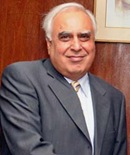 New Delhi: Sixteen years after the idea was first mooted, the Right of Children to Free and Compulsory Education Act, 2009 has finally been notified, after receiving the assent of the President of India.
New Delhi: Sixteen years after the idea was first mooted, the Right of Children to Free and Compulsory Education Act, 2009 has finally been notified, after receiving the assent of the President of India.
Article 21-A, as inserted by the Constitution (Eighty-Sixth Amendment) Act, 2002, provides for free and compulsory education of all children in the age group of six to fourteen years as a Fundamental Right.
Consequently, the Right of Children to Free and Compulsory Education Act, 2009, has been enacted by the Parliament.
“This was a matter of national importance for UPA (United Progressive Alliance). This bill is just not about taking children to school. This is a bill that speaks about quality education, it speaks about the physical infrastructure, teacher-pupil ratio, qualification of teachers,” Human Resource Development (HRD) Minister Kapil Sibal said.
The salient features of the Right of Education Bill are:
1: Free and compulsory education to all children of India in the six to 14 age group.
2: No child shall be held back, expelled, or required to pass a board examination until completion of elementary education.
3: A child who completes elementary education ( upto class 8 ) shall be awarded a certificate.
4: Calls for a fixed student-teacher ratio.
5: Will apply to all of India except Jammu and Kashmir.
6: Provides for 25 percent reservation for economically disadvantaged communities in admission to Class One in all private schools.
7: Mandates improvement in quality of education.
8: School teachers will need adequate professional degree within five years or else will lose job.
9: School infrastructure (where there is problem) to be improved in three years, else recognition cancelled.
10: Financial burden will be shared by state and central government.